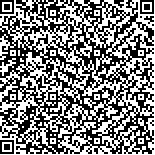| 摘要: |
| [目的]利用1996—2016年中国食物进口数据,分析中国食物进口格局,实证研究中国食物进口需求,分析进口来源地在中国食物进口市场上的相互关系。[方法]采用区分来源的Rotterdam模型。[结果]在进口格局上,美国、巴西和阿根廷、一带一路沿线国家均占据中国食物进口总量的较大比重; 支出弹性结果表明当中国食物进口需求增加时,从加拿大进口的食物数量增幅会相对最大,巴西和阿根廷增幅相对最小; 自价格弹性结果表明,来源于巴西和阿根廷的食物进口量受自身价格变化的影响相对最小,其次是美国、澳大利亚,中国食物进口对这些国家的依赖性较强; 交叉价格弹性结果表明,中国食物进口来源地之间存在一定的竞争和互补关系。其中,进口美国与加拿大食物之间存在互补关系,进口澳大利亚与巴西和阿根廷食物之间存在竞争关系。[结论]食物进口来源地之间存在一定的竞争和互补关系,中国食物进口应充分考虑这些关系,促进食物进口来源地、运输通道和贸易渠道的多元化,以保障食物贸易安全。 |
| 关键词: 食物进口需求市场格局弹性Rotterdam模型 |
| DOI: |
| 分类号:TS2 |
| 基金项目:2018年农业农村资源监测统计工作项目“日本农业产业发展及政策跟踪监测”(D201811) |
|
| CHINESE FOOD IMPORT DEMAND ESTIMATION UNDER TRADE LIBERALIZATION |
|
Li Guojing1, Han Xinru2, Chen Yongfu3※
|
|
1. Institute of Agriculture Resource and Regional Planning, Chinese Academy of Agricultural Sciences, Beijing 100081, China;2. Institute of Agricultural Economics and Development, Chinese Academy of Agricultural Sciences Beijing 100081, China;3. College of Economics and Management, China Agricultural University, Beijing 10008, China
|
| Abstract: |
| This article analyzed Chinese food import pattern and used the Rotterdam model to estimate the elasticity of Chinese food import demand by using the data of Chinese food imports from 1996 to 2016. In the import pattern, the United States, Brazil, Argentina, and countries along the Belt and Road Initiative all accounted for a large proportion of China′s food imports. The elasticity of spending showed that when the demand for food imports from China increased, the increase in the amount of food imported from Canada were relatively largest, with Brazil and Argentina having the smallest increase. Price elasticity showed that food imports from Brazil and Argentina were relatively minimally affected by changes in their own prices, followed by the United States and Australia. The cross price elasticity showed that there was a complementary relationship between the import of United States and Canadian food and there was a competitive relationship between imported Australia and Brazil and Argentina. Chinese food imports should take full account of these relationships, the sources of food imports, transportation routes and trade channels in order to ensure the safety of food trade. |
| Key words: food import demand market pattern elasticity Rotterdam model |

